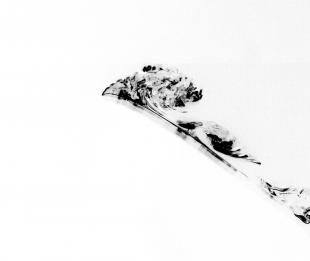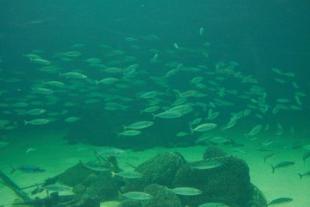Location:
Room 1-1.08, Waddington Building, King's Buildings
Date:
The next IES Seminar is part of a special Nature-Inspired Engineering series that is being hosted by Dr Ignazio Maria Viola (Engineering), Dr Naomi Nakayama (Biology) and Dr Enrico Mastropaolo (Engineering).
The seminar will take place on Tuesday (December 13th) and will be a double session with Dr Kiran Ramesh of the University of Glasgow presenting on Leading-Edge Vortices in Nature and Engineering, and Dr Shaun Killen, also of the University of Glasgow, presenting on the interplay among metabolic traits, locomotor costs, and spatial positioning of individuals within fish schools.
There will be catered food and refreshments available from 12:45.
This will be the final seminar of 2016 and we look forward to seeing you for what will be very interesting talks.
Leading-Edge Vortices in Nature and Engineering
Dr Kiran Ramesh, University of Glasgow
Leading-Edge Vortices (LEVs) are a prominent feature in unsteady flow past surfaces. They are ubiquitous in natural locomotion and can be observed in insects flying with flapping wings or in fish swimming with waving tails, where they provide aerodynamic benefits such as high-lift and manoeuvrability. In engineering applications, LEVs have long been known as the source of high-lift in delta wing aircraft, and of late are relevant for developing micro air vehicles with flapping wings, and renewable energy generation with oscillating rather than rotating wings. This talk will discuss the role of LEVs in nature and engineering, introduce the leading-edge suction parameter (LESP) for predicting occurrences of LEVs in unsteady flows, and demonstrate a low-order aerodynamic model for use in engineering problems with unsteady flow phenomena.
Biography
Kiran Ramesh is a Lecturer in Aerospace Sciences at the University of Glasgow. Prior to this, he has obtained his MS and PhD degrees from North Carolina State University, USA. His research areas are unsteady aerodynamics and nonlinear aeroelasticity, and his research methodology involves the development of analytical and low-order numerical methods for modelling the underlying phenomena. He works on various engineering problems underpinned by these research areas such as developing control laws for highly flexible aircraft, design of flapping-wing flyers/swimmers, and the use of flapping wings for renewable power generation.
The interplay among metabolic traits, locomotor costs, and spatial positioning of individuals within fish schools
Dr Shaun Killen, University of Glasgow
Many animals species live in social groups for the benefits associated with foraging, predator avoidance, and reproduction. Many animals, however, can also reduce their costs of locomotion by moving in groups as individuals take advantage of the zones of low pressure and vortices produced by their group mates. A prime example is fish schools, in which fish in posterior positions within a moving school appear to use less effort to swim at the same speed as fish further ahead in the group. In this talk I review some of our recent work showing how this is possible and how individuals within fish species may have preferences for particular positions within moving fish schools.
Biography
Shaun Killen is a Senior Research Fellow at the University of Glasgow, in the Institute of Biodiversity, Animal Health and Comparative Medicine. He is interested in the physiological and behavioural ecology of animals and especially how energetic demand influences trade-offs involved with foraging and predator-avoidance behaviour in the context of environmental change. Currently he is also examining interactions between individual physiology and group behaviours, including socially-facilitated foraging and predator avoidance, dominance hierarchies, group locomotion and animal social networks. He is also studying the relevance of physiology and behaviour for fisheries-induced evolution.
Further Information
- Dr Ignazio Maria Viola:
- Dr Enrico Mastropaolo:
- Dr Naomi Nakayama:
- Dr Kiran Ramesh:
- Dr Shaun Killen:
Event Contact Name:
IES Seminar team




